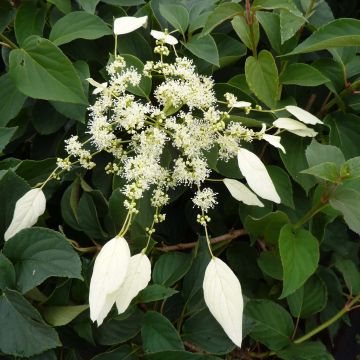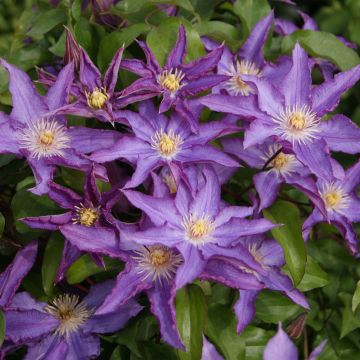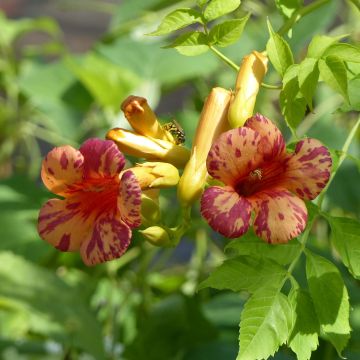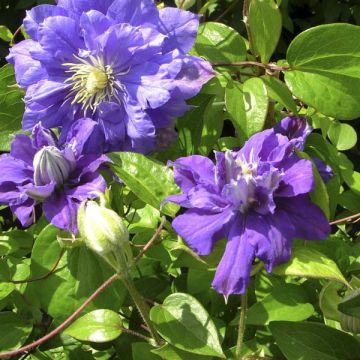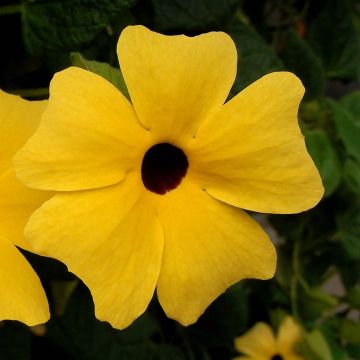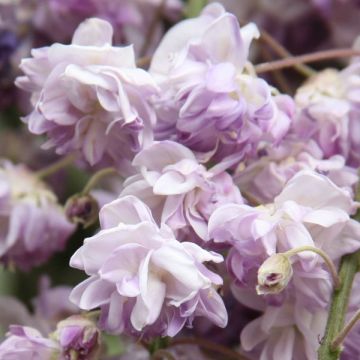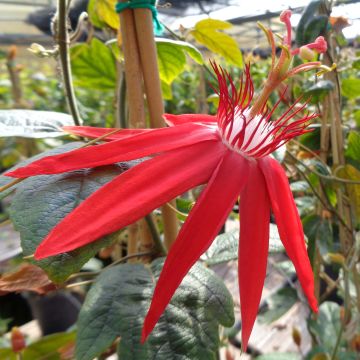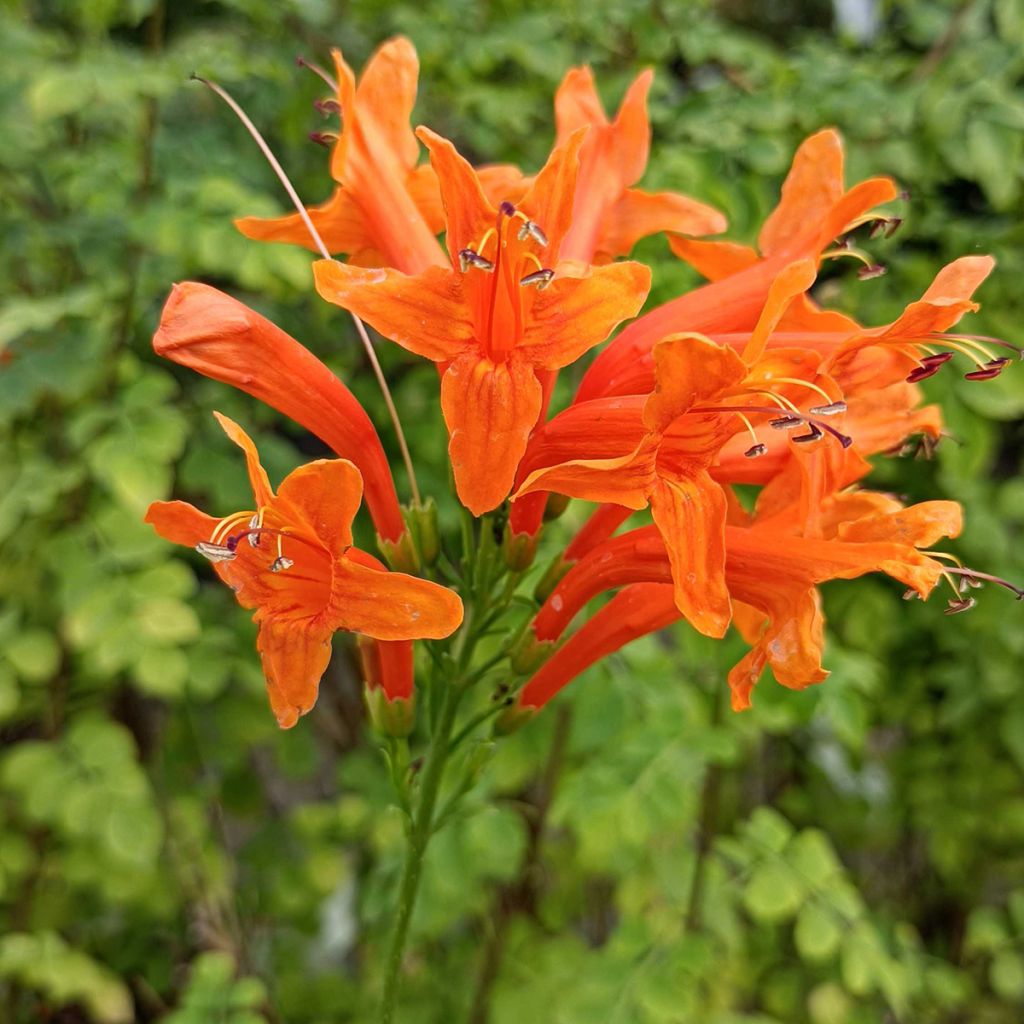

Tecomaria (Tecoma) capensis - Chèvrefeuille du Cap
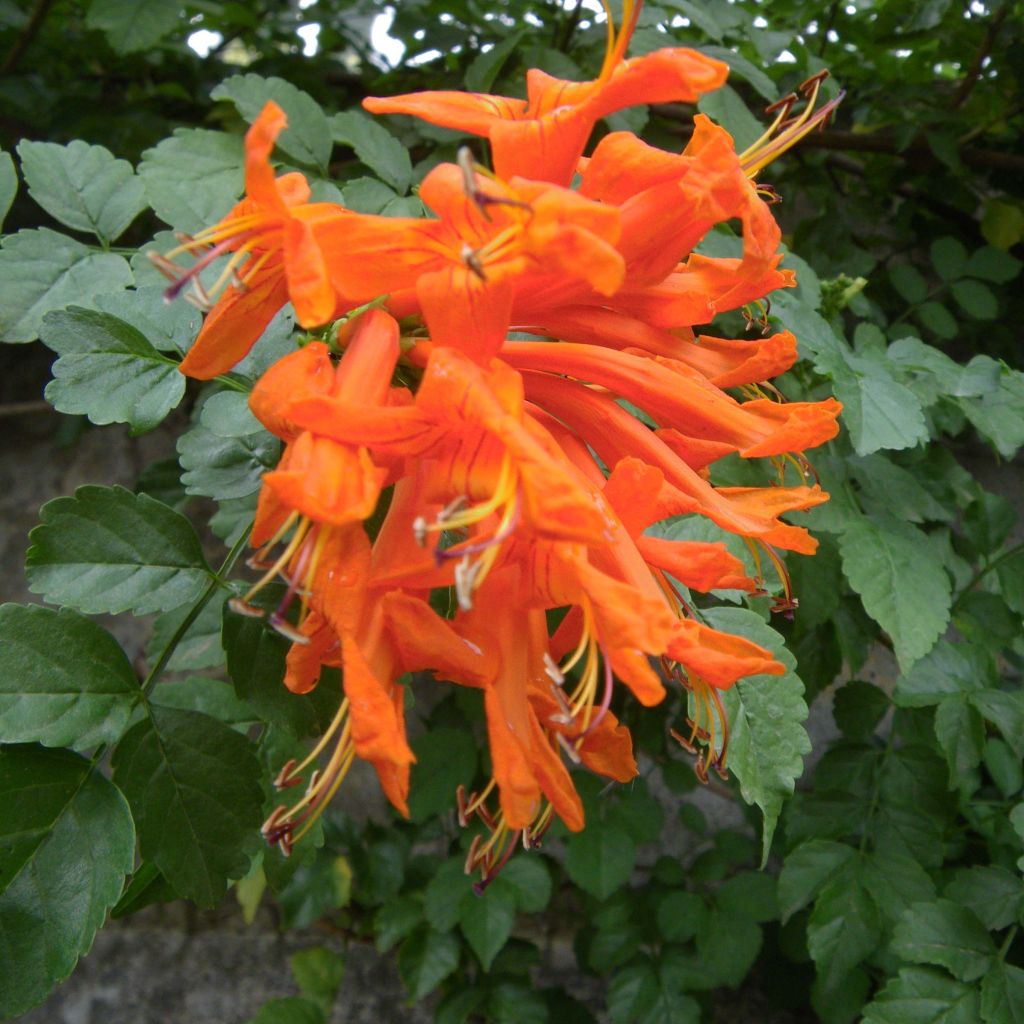

Tecoma capensis
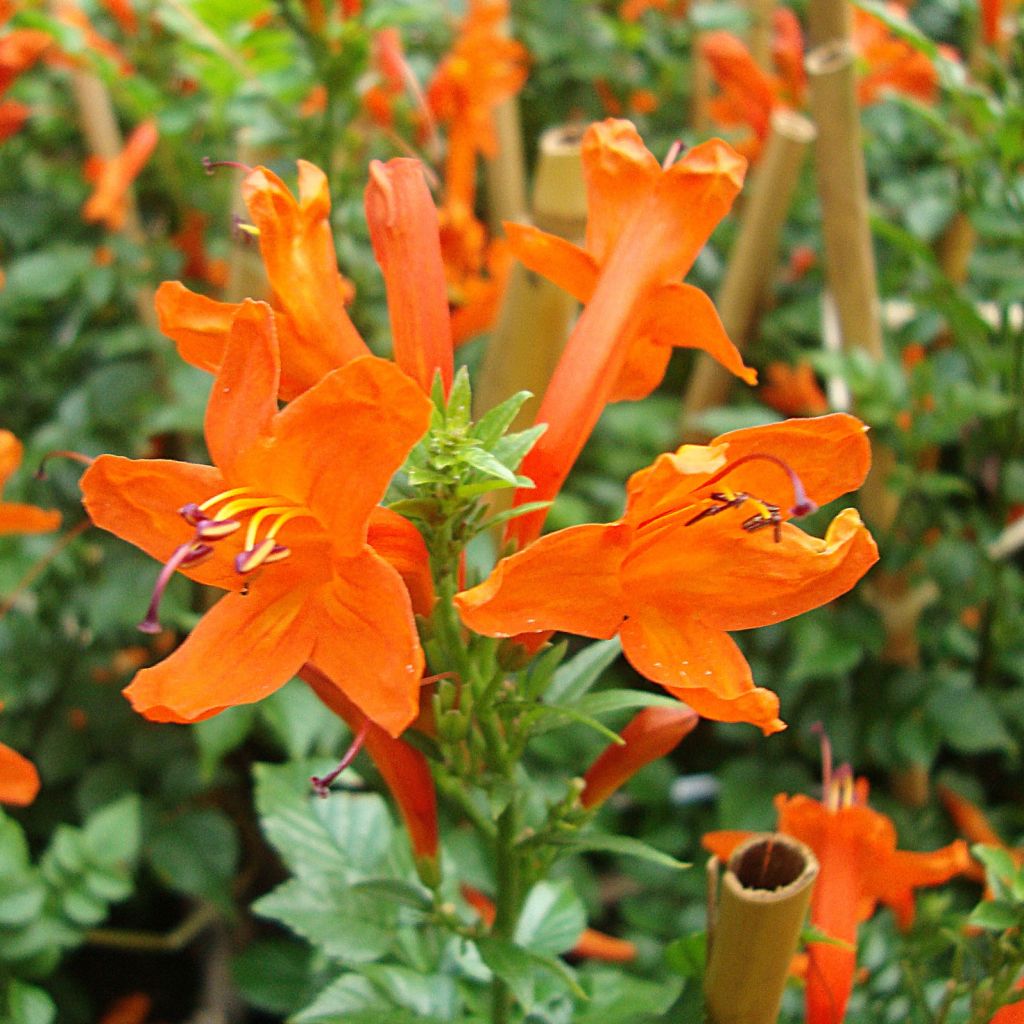

Tecoma capensis
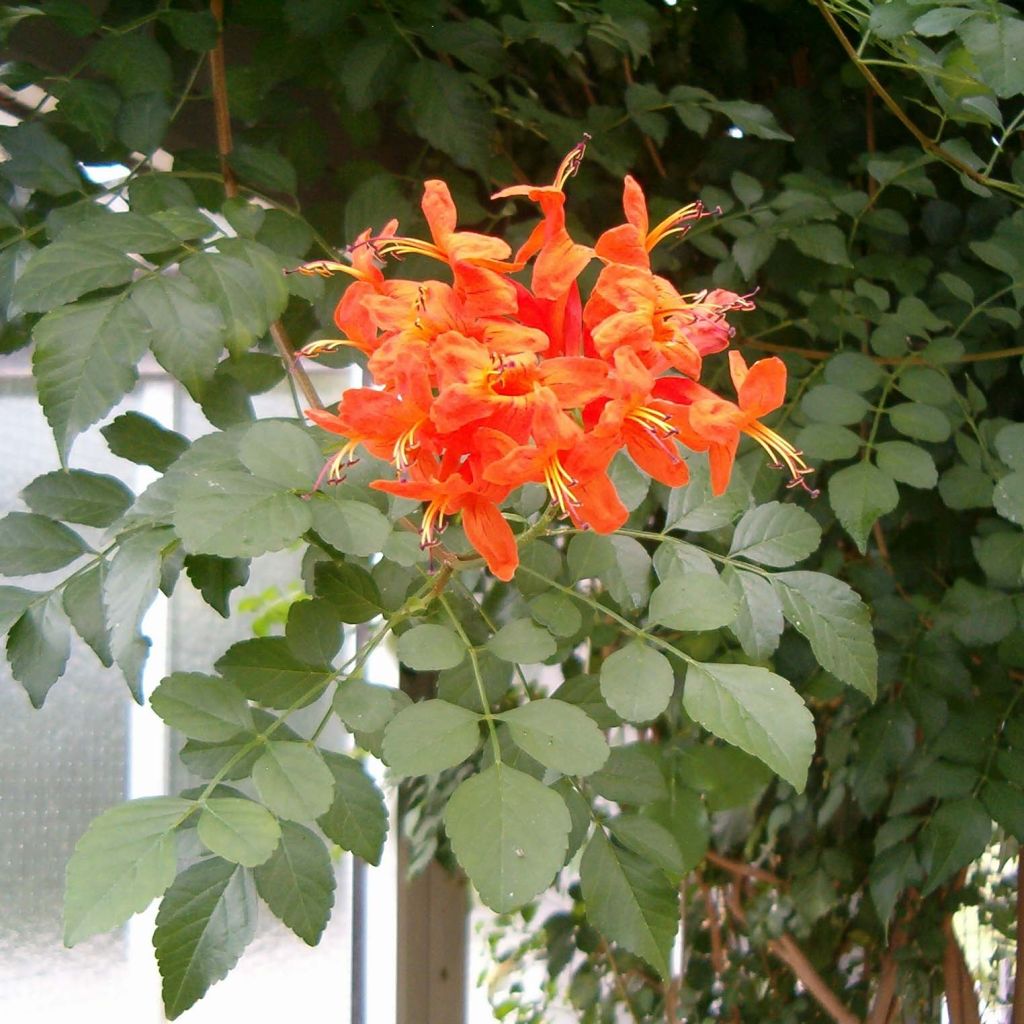

Tecoma capensis
Tecoma capensis
Tecoma capensis
Cape honeysuckle, West Indian honeysuckle
Thank you to the people (for order preparation and shipping), the plant I received looks healthy. Planted near a wall, I am now patiently waiting for it to take root... or not?
Thierry, 04/08/2023
This item cannot be shipped to the selected country
Delivery charge from €5.90
More information
Schedule delivery date,
and select date in basket
This plant carries a 6 months recovery warranty
More information
We guarantee the quality of our plants for a full growing cycle, and will replace at our expense any plant that fails to recover under normal climatic and planting conditions.
From €5.90 for pickup delivery and €6.90 for home delivery
Express home delivery from €8.90.

Does this plant fit my garden?
Set up your Plantfit profile →
Description
The Tecomaria (or Tecoma) capensis, contrary to its name of Cape Honeysuckle, is actually a bignonia and not a honeysuckle. However, it is more of a sarmentous bush, unable to climb on its own, rather than a true climber. The Tecoma is appreciated for its long late flowering, of a very bright orange, which brings a lot of charm to the late season. It is wonderfully highlighted by its finely cut foliage, with shiny leaflets, of a very bright green. Easy to grow in the ground in mild climates, this South African plant loves the sun and heat and tolerates summer drought once well established in deep soil. The Cape Honeysuckle is also a very beautiful subject for a terrace or balcony, to be stored in winter in colder regions.
The Tecomaria capensis belongs to the Bignoniaceae family. It is native to the Eastern Cape province of South Africa and southern Mozambique. It is a plant for mild climates: as an adult, it can withstand brief freezes of around -7 /-8°C in well-drained soil, regrowing from the stump in spring if properly protected. Its growth is quite fast, its habit is erect and weakly climbing. It can be trained as a large dense bush through regular pruning or its branches can be trained on a structure. Its basal stems, whose nodes easily root upon contact with the ground, allow the plant to spread in width. This characteristic is often used to create large hedges, trimmed or not, in its native region. It will reach an average height of 5 m in the ground, in very mild climates and under good growing conditions. If cut back every year by frost, it will rarely exceed 2.50 m (8ft) in height. In a container, it reaches about 1.50 m (5ft) in height with a 1 m (3ft) spread.
The stems of Tecomaria capensis are punctuated by lenticels, small round and light marks, which distinguish them from those of other bignonias, which peel off in flakes over time. They bear foliage that persists if it does not freeze in winter. It becomes deciduous from -2/-3°C. The leaves are arranged in an opposite manner on the branches. Each leaf is divided into 5 to 9 oblong to ovate leaflets, irregularly toothed, of an intense and glossy green.
The flowering begins at the end of summer, late August or early September, and continues into autumn if the weather permits. The flowers are long, slightly curved and erect narrow tubes, measuring 6 to 8 cm (2 to 3in) in length, slightly flaring at their tips. The flower is adorned with beautiful protruding stamens and a long style. Their colour is a very beautiful vivid and pure orange. This flowering attracts many pollinating insects. It gives way to elongated pods measuring up to 25 cm (10in) in length, which contain numerous winged seeds.
Tecomaria capensis absolutely requires protection during the first years of cultivation, even in regions that do not experience severe winter frosts. It is a beautiful shrub for USDA zone 8b, definitely worth trying in mild Mediterranean or oceanic climates. It flowers for a long time in a hedge or shrub border, adding a bright note to a time of year when colours are sometimes lacking. In the garden or on the terrace, it can be combined, for example, with the blue blooms of Plumbago capensis or Ceratostigma griffithii, whose foliage turns beautifully red in autumn. Some Mediterranean gardens have adopted it as a hedge: discreet annual pruning, after flowering, allows it to maintain a dense and welcoming habit for birds. When left free, the plant can run at the base of a wall or gradually cover it. It is often trained on trellises and wire. In very dry summer climates, a few deep but spaced-out waterings will be welcome.
Report an error about the product description
Tecoma capensis in pictures
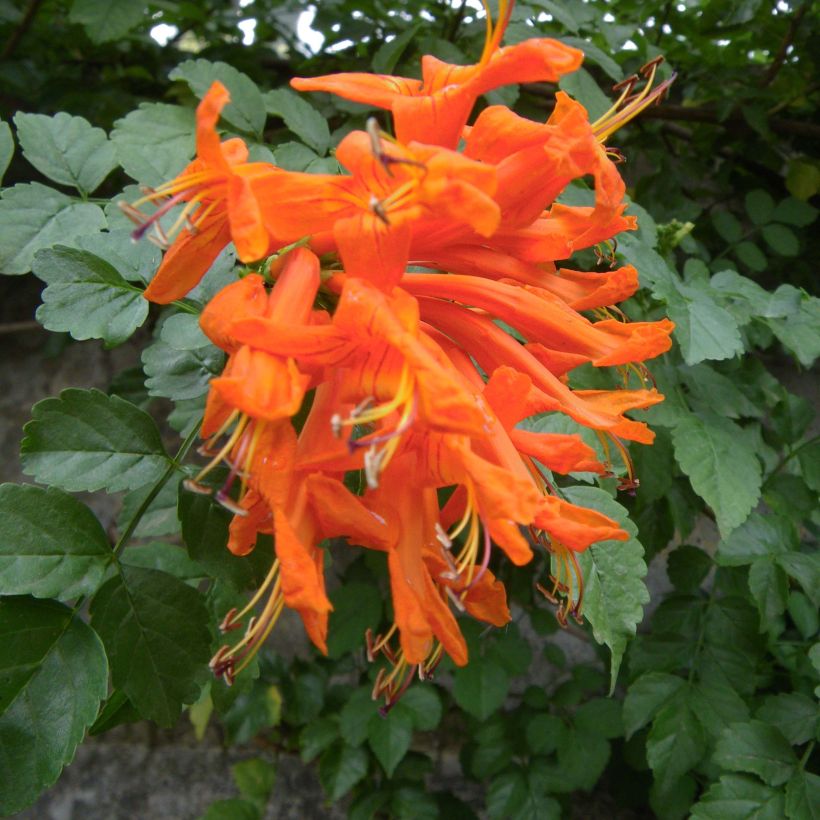

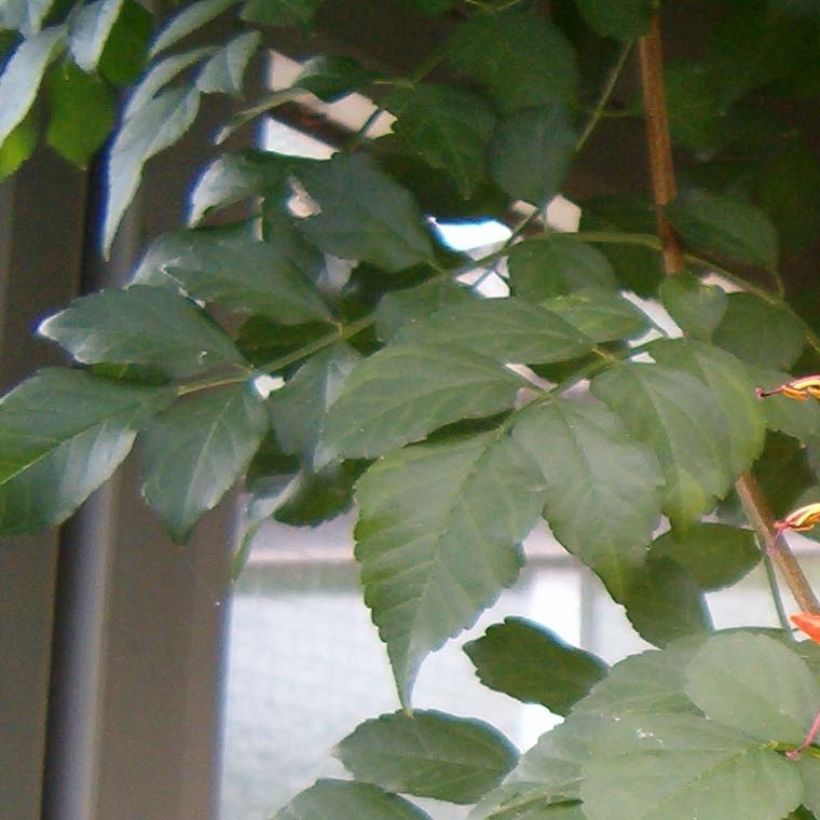

Plant habit
Flowering
Foliage
Botanical data
Tecoma
capensis
Bignoniaceae
Cape honeysuckle, West Indian honeysuckle
South Africa
Planting and care
The Tecomaria capensis is preferably planted in spring, to allow the plant to establish itself well before winter. It is a plant that is not very demanding on the nature of the soil, as long as it is rich enough and well-drained: a mixture of compost and garden soil, supplemented with some gravel, should be suitable. Its hardiness allows it to survive short frosts (for example, late at night) of around -7 to -8°C (19.4 to 17.6°F) once it is mature. However, young plants must be protected during the first 2 or 3 winters with a thick layer of mulch and winter protection fabric. After 2 or 3 years of cultivation, a good mulch on the base will suffice. The plant will vigorously regrow from the base if its branches have been affected by frost, and will reestablish its vegetation within a few months.
Its resistance to summer drought is respectable, once it is well rooted in deep soil: 2 to 3 generous waterings during the summer are necessary in dry Mediterranean regions. The Cape Honeysuckle enjoys warmth and prefers a sunny exposure, except in the Mediterranean where it will also thrive in partial shade. Plant it along a well-exposed wall or provide it with the shelter of other evergreen bushes that will protect it from the cold and dry winter winds. Pruning is not essential, but the Tecomaria tolerates it well. If it proves necessary after frost, you can do it in spring. The bush can also be pruned after flowering to limit its size or encourage branching.
Planting period
Intended location
Care
-
, onOrder confirmed
Reply from on Promesse de fleurs
Summer flowering climbers
Haven't found what you were looking for?
Hardiness is the lowest winter temperature a plant can endure without suffering serious damage or even dying. However, hardiness is affected by location (a sheltered area, such as a patio), protection (winter cover) and soil type (hardiness is improved by well-drained soil).

Photo Sharing Terms & Conditions
In order to encourage gardeners to interact and share their experiences, Promesse de fleurs offers various media enabling content to be uploaded onto its Site - in particular via the ‘Photo sharing’ module.
The User agrees to refrain from:
- Posting any content that is illegal, prejudicial, insulting, racist, inciteful to hatred, revisionist, contrary to public decency, that infringes on privacy or on the privacy rights of third parties, in particular the publicity rights of persons and goods, intellectual property rights, or the right to privacy.
- Submitting content on behalf of a third party;
- Impersonate the identity of a third party and/or publish any personal information about a third party;
In general, the User undertakes to refrain from any unethical behaviour.
All Content (in particular text, comments, files, images, photos, videos, creative works, etc.), which may be subject to property or intellectual property rights, image or other private rights, shall remain the property of the User, subject to the limited rights granted by the terms of the licence granted by Promesse de fleurs as stated below. Users are at liberty to publish or not to publish such Content on the Site, notably via the ‘Photo Sharing’ facility, and accept that this Content shall be made public and freely accessible, notably on the Internet.
Users further acknowledge, undertake to have ,and guarantee that they hold all necessary rights and permissions to publish such material on the Site, in particular with regard to the legislation in force pertaining to any privacy, property, intellectual property, image, or contractual rights, or rights of any other nature. By publishing such Content on the Site, Users acknowledge accepting full liability as publishers of the Content within the meaning of the law, and grant Promesse de fleurs, free of charge, an inclusive, worldwide licence for the said Content for the entire duration of its publication, including all reproduction, representation, up/downloading, displaying, performing, transmission, and storage rights.
Users also grant permission for their name to be linked to the Content and accept that this link may not always be made available.
By engaging in posting material, Users consent to their Content becoming automatically accessible on the Internet, in particular on other sites and/or blogs and/or web pages of the Promesse de fleurs site, including in particular social pages and the Promesse de fleurs catalogue.
Users may secure the removal of entrusted content free of charge by issuing a simple request via our contact form.
The flowering period indicated on our website applies to countries and regions located in USDA zone 8 (France, the United Kingdom, Ireland, the Netherlands, etc.)
It will vary according to where you live:
- In zones 9 to 10 (Italy, Spain, Greece, etc.), flowering will occur about 2 to 4 weeks earlier.
- In zones 6 to 7 (Germany, Poland, Slovenia, and lower mountainous regions), flowering will be delayed by 2 to 3 weeks.
- In zone 5 (Central Europe, Scandinavia), blooming will be delayed by 3 to 5 weeks.
In temperate climates, pruning of spring-flowering shrubs (forsythia, spireas, etc.) should be done just after flowering.
Pruning of summer-flowering shrubs (Indian Lilac, Perovskia, etc.) can be done in winter or spring.
In cold regions as well as with frost-sensitive plants, avoid pruning too early when severe frosts may still occur.
The planting period indicated on our website applies to countries and regions located in USDA zone 8 (France, United Kingdom, Ireland, Netherlands).
It will vary according to where you live:
- In Mediterranean zones (Marseille, Madrid, Milan, etc.), autumn and winter are the best planting periods.
- In continental zones (Strasbourg, Munich, Vienna, etc.), delay planting by 2 to 3 weeks in spring and bring it forward by 2 to 4 weeks in autumn.
- In mountainous regions (the Alps, Pyrenees, Carpathians, etc.), it is best to plant in late spring (May-June) or late summer (August-September).
The harvesting period indicated on our website applies to countries and regions in USDA zone 8 (France, England, Ireland, the Netherlands).
In colder areas (Scandinavia, Poland, Austria...) fruit and vegetable harvests are likely to be delayed by 3-4 weeks.
In warmer areas (Italy, Spain, Greece, etc.), harvesting will probably take place earlier, depending on weather conditions.
The sowing periods indicated on our website apply to countries and regions within USDA Zone 8 (France, UK, Ireland, Netherlands).
In colder areas (Scandinavia, Poland, Austria...), delay any outdoor sowing by 3-4 weeks, or sow under glass.
In warmer climes (Italy, Spain, Greece, etc.), bring outdoor sowing forward by a few weeks.




































